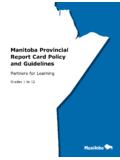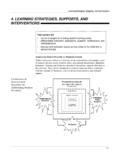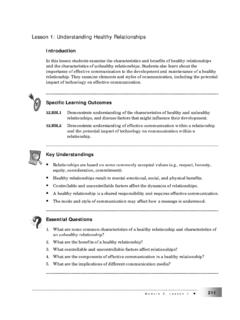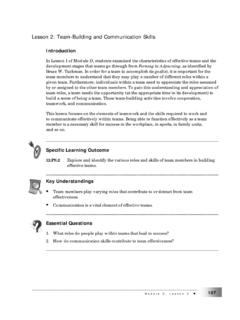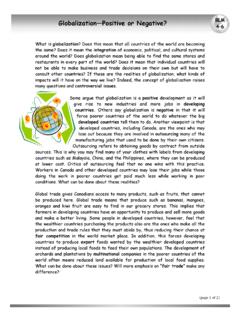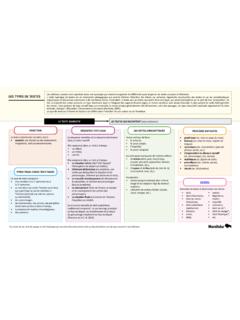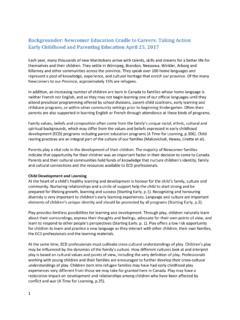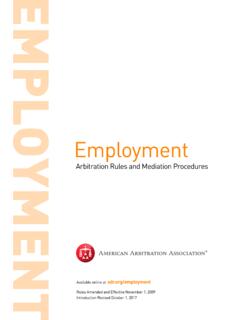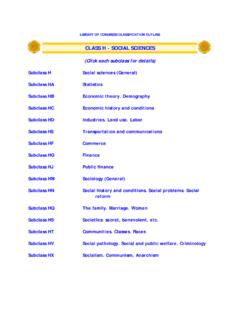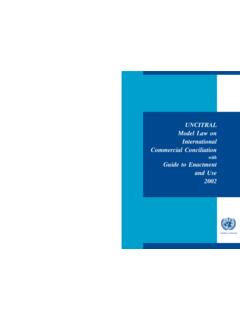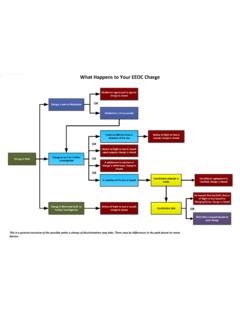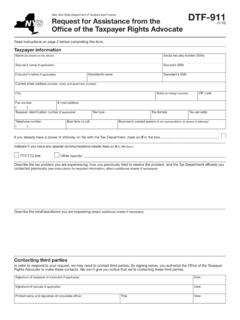Transcription of CHAPTER 3: APPROACHES TO DISPUTE RESOLUTION
1 CHAPTER 3: APPROACHES TO DISPUTE RESOLUTION Before You BeginMost disputes can be resolved, and most disputes are worth resolving. Byworking together to resolve disputes, everyone benefits from the results. Whenno attempts are made to resolve differences in a fair and friendly way, theeducation of the student and the life of the family can be disrupted. Stress can beplaced upon school employees, and resources can be strained. It is in the bestinterest of everyone, especially the student, to try to resolve disputes as quicklyand fairly as way of dealing with disputes is to ignore them, but this may not produce thedesired results.
2 In many cases, a DISPUTE left unresolved could become a largerissue than it was to begin with. Once you have made a decision to resolve adispute, it is important to explore your options and decide upon the next step. Before taking action in any DISPUTE RESOLUTION process, it is worth taking sometime to carefully consider the situation and ask these questions. What exactly is the DISPUTE about? Who is involved in the DISPUTE ? Is the issue important enough to pursue? Is this something that can be worked out by me and the other person orpeople who are involved in the DISPUTE ? Am I willing to work this out with the other person or people who areinvolved in the DISPUTE ?
3 What would solve the problem for me? How would I like to see the DISPUTE resolved? What are the benefits of this particular RESOLUTION ? If the DISPUTE has to do with a student, how will that student benefit? Do I have all the information I need about the situation, the school, theresources that are available to me, and the policies that may be in place?If you have decided that it is worthwhile to begin a DISPUTE RESOLUTION process,the next step is to decide on an approach. Just as there are many ways to become involved in a DISPUTE , there are manyways to resolve a DISPUTE . Basic elements of problem solving can be found inevery approach.
4 The differences have to do with how much control people haveover the process, how much control outside parties have over the process, andhow formal the process Together: A Guide to Positive Problem Solving Possible ApproachesInformal DISPUTE RESOLUTION involves conversations with the person or people who aremost directly involved in the DISPUTE and are most likely to help find are discussed in a direct and informal way. This can be a rewarding andpositive process, and far more efficient than some of the more formal APPROACHES . The first three APPROACHES to DISPUTE RESOLUTION problem solving, negotiation, andconciliation are the most local and informal APPROACHES and, therefore, the focus ofthis handbook.
5 The success of informal DISPUTE RESOLUTION depends on people being able toresolve a DISPUTE themselves. The more formal the approach, the more power anoutside third party has over the process. In extreme cases, a third party makes alegally binding decision about the outcome. Problem Solvingis the most informal approach. It involves people workingtogether in a voluntary and co-operative way to overcome their differences. Inthis approach, people have the greatest degree of control over the process andflexibility in the outcome. They do not come to a meeting knowing in advancehow they want the problem solved. They are open to ideas and suggestions,and they are willing to find solutions that work for everyone.
6 This approachcan only be successful if people are able to agree about what the issues are andare willing to work together to resolve them. Everyone s needs andexpectations must be taken into consideration. The benefit is they work it outthemselves. No third parties are similar to problem solving. The difference is that, beforethey meet one another, people already have solution(s) in mind that wouldmeet their needs. In negotiation, people explore the issues, as well asexpectations, motivations, and goals, and they try to find common groundbetween them. This common ground may be the basis for a successfulresolution.
7 In this approach, people generally work things out themselves,but sometimes an outside facilitator may be to DISPUTE ResolutionPersonalControlFormalityhighhi ghlowlowProblemSolvingNegotiationConcili ationMediationArbitration/AdjudicationLe gal RecourseWorking Together: A Guide to Positive Problem Solving 12 The most localand informalapproaches areproblem solving,negotiation, andconciliation. They arethe focus of a process that involves the encouragement and support of anoutside third party acting as a conciliator to help guide the process. Theconciliator must not take anyone s side. He or she meets with the people indispute and helps them identify issues, find common ground and sharedgoals, and look for solutions.
8 Usually the conciliator meets with the disputingparties one at a time before they meet face-to-face on their own. Sometimesthe conciliator acts as a go-between, which is known as shuttle diplomacy. A conciliator is like a coach on a team, providing feedback and people in DISPUTE remain in control of the process. Formal APPROACHES to DISPUTE RESOLUTION mediation , adjudication or arbitration,and legal recourse become necessary when people in DISPUTE no longer feel theycan resolve the DISPUTE or control the situation by themselves. Because theseapproaches require varying degrees of control by outside third parties, they remainoutside the scope of this handbook.
9 (Please see Suggested Resources for moreinformation.) mediation , like conciliation , is a co-operative, voluntary problem-solvingprocess involving an impartial third party. The mediator must be neutral andacceptable to everyone involved in the DISPUTE . The mediator helps define theissues and find solutions that work for everyone. The mediator helps guidethe process, but the people in DISPUTE are responsible for resolving itthemselves. mediation is more formal than conciliation . Arbitration / Adjudicationoccurs when the DISPUTE is taken to an outsidethird party for RESOLUTION . In arbitration, a third party (or arbitrator) hears bothsides of a DISPUTE and then makes a decision or judgment.
10 In adjudication,people are often represented by lawyers, who present their information to anindividual, who then makes a decision or judgment. The people in disputehave limited control over the process or the outcome. The judgment may benon-binding or binding. Legal Recourseis the most formal approach to DISPUTE RESOLUTION . In legalrecourse, people are typically represented by lawyers who present evidenceregarding both sides of the DISPUTE at a public hearing. A judge or jury makes adecision based on the merits of the case. The decision is binding. All APPROACHES to DISPUTE RESOLUTION are about resolving differences and workingtoward solutions.
